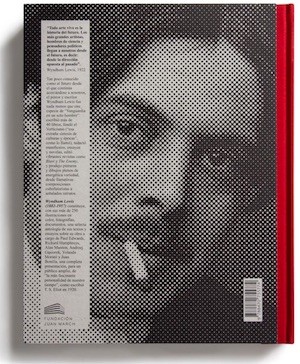Peter Fieldman
Not since its Wyndham Lewis retrospective in 2010 has the March Foundation in Madrid put together so many works of art depicting the horrors of war. Yet there are virtually no scenes of destruction or dead bodies only abstract images, hence the title of the exhibition – The Unseen.

The exhibition is dedicated to the Informalist movement, which sprung up throughout Europe in the post war period between 1945 and 1965, a period in which art combined with photography. It was radically different to what had taken place in the inter war period questioning the concept of “form” as well as the conventional methods of painting.
The art produced during this period reflected the experiences of many artists and photographers who had memories of the war. The Second World War was total and saw more destruction and loss of life than any previous conflict with unprecedented barbaric atrocities in every continent culminating with the atomic bombs which annihilated Hiroshima and Nagasaki and the separation of Europe by what Winston Churchill called ‘the iron curtain’.
But could the horror of Auschwitz and other Nazi concentration camps, the indiscriminate bombing of Coventry, Tokyo and Dresden or the result of the atomic bombs on Hiroshima and Nagasaki be recorded without glorifying the destruction, misery and death? The solution was to portray the war in a totally subjective fashion through abstract forms; the invisible reality of war.
While the western artists had total artistic freedom, Eastern European artists were kept in the dark about the new movement until 1958 when a small group of Czech artists was granted permission to visit the World’s Fair in Brussels. Impressed by what they saw they started their own movement producing paintings, collages and photographic works.

Arriba: Mathieu
The aftermath of the war provided an enormous amount of waste materials and the Informalist artists took advantage of what was available finding materials such as wood, fabrics, plastic, glass, cardboard, sackcloth, metals, plaster, rags etc to enhance their works. There was also a move away from brushes, using palette knives, cloths and even hands to stroke and smear paint to create differing textures and colours far from conventional painting. The use of different materials also led to new compositions of three dimensional works and collages.
This new art form was also prevalent in the USA, notably from Pollock. Rothko and De Kooning, where it was described as abstract expressionism. But its roots had more to do with the expanding American consumer society than reflecting the consequences of military conflict since the USA had not seen (with the Pearl Harbor exception) any of the bombing which had caused so much destruction in Europe and Japan.
Although the object of the exhibition is to portray the unseen, the harsh reality of war is brought home to the visitor by the opening section comprising dramatic photos of the bombing of Dresden, Berlin, Coventry and Hiroshima and the works of Ken Domon and Kikuji Kawada, Japanese photographers, who in the 1950s and 60s published books to record the consequences of the war in Japan.
The Unseen: VillageArriba: Steinert
Many young creative photographers were influenced by the abstract art form of the Informalist movement. By taking photographs of drab buildings, streets and walls covered with posters, stripped backed in several layers, they were able to produce creative montages predominantly with striking black and white images although they also used colour. Their abstract works were often difficult to distinguish from paintings.
The major exponents of the Informalist movement included renowned artists as well as lesser known, talented artists and photographers. Among the leading names whose works are on display are Rafael Canogar, Jean Dubuffet, Jean Fautrier, Francisco Gomez, Hans Hartung, Georges Mathieu, Antonio Saura, Otto Steinert, Antoni Tapies, Jacques Villegle, Fernando Zobel, and the Czechs, Jan Koblasa, Jan Kubicek, Pavia Mautnerpova, and Jiri Valenta.
More than 160 works are exhibited originating from both private and public collections including the Gandur Foundation in Geneva, the Pompidou centre in Paris, The Dietmar Siegert collection, the Pinacoteca di Brera in Milan as well as the Prado and Thyssen Bornemisza museums in Madrid. The exhibition, inaugurated on 26 February, runs until 5 June.
- Editado por Paco Audije


